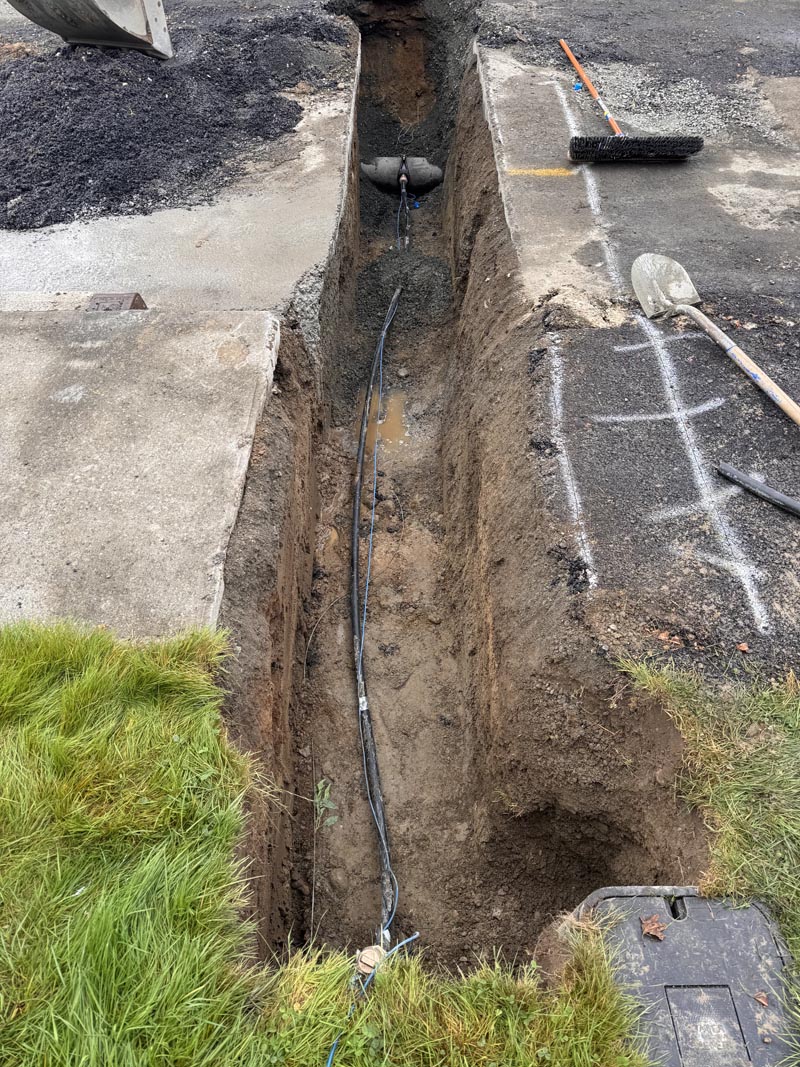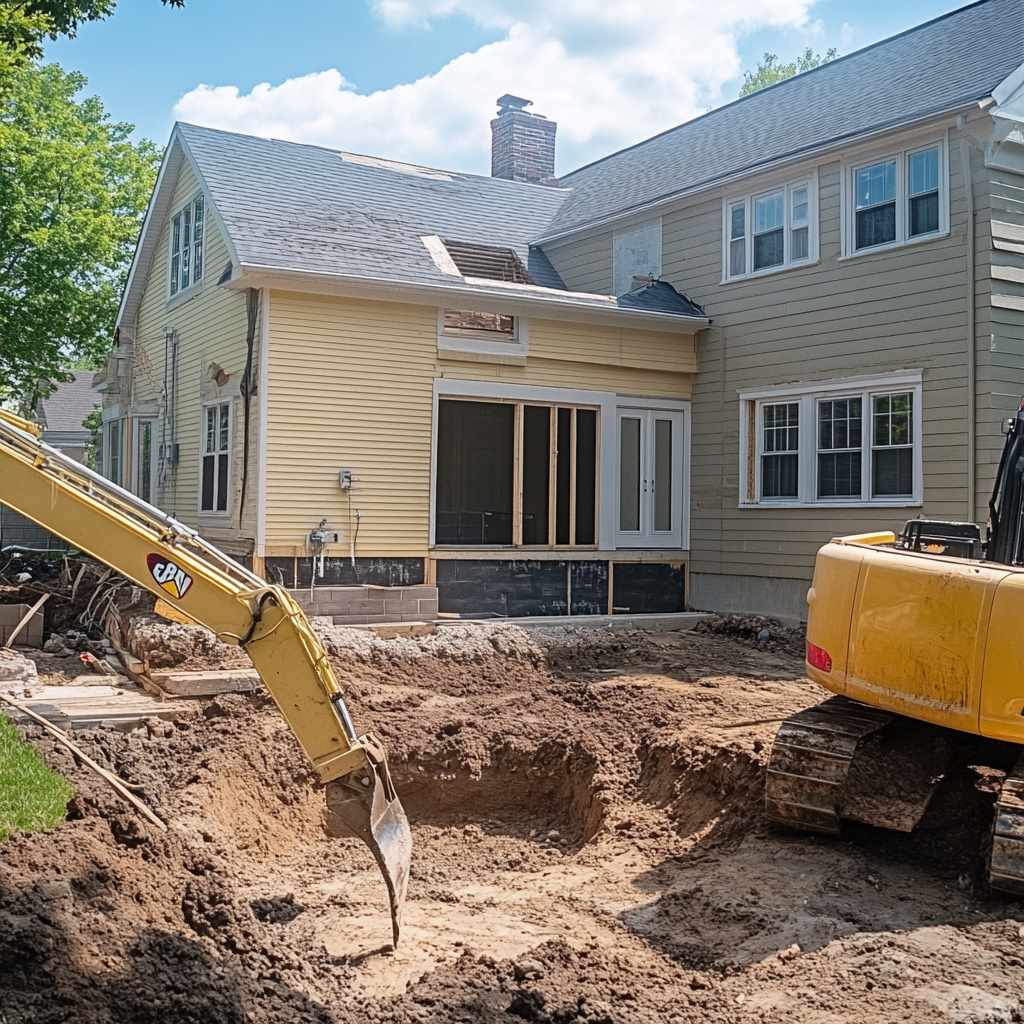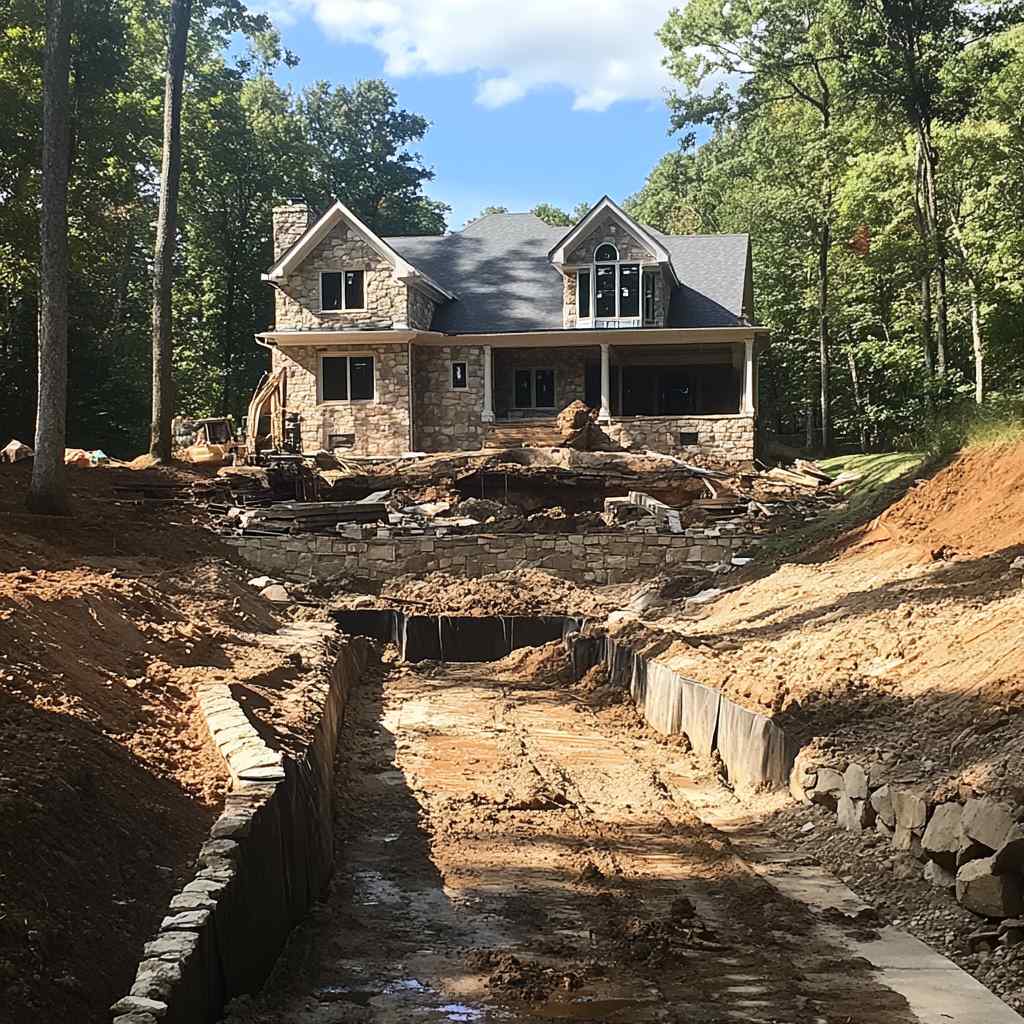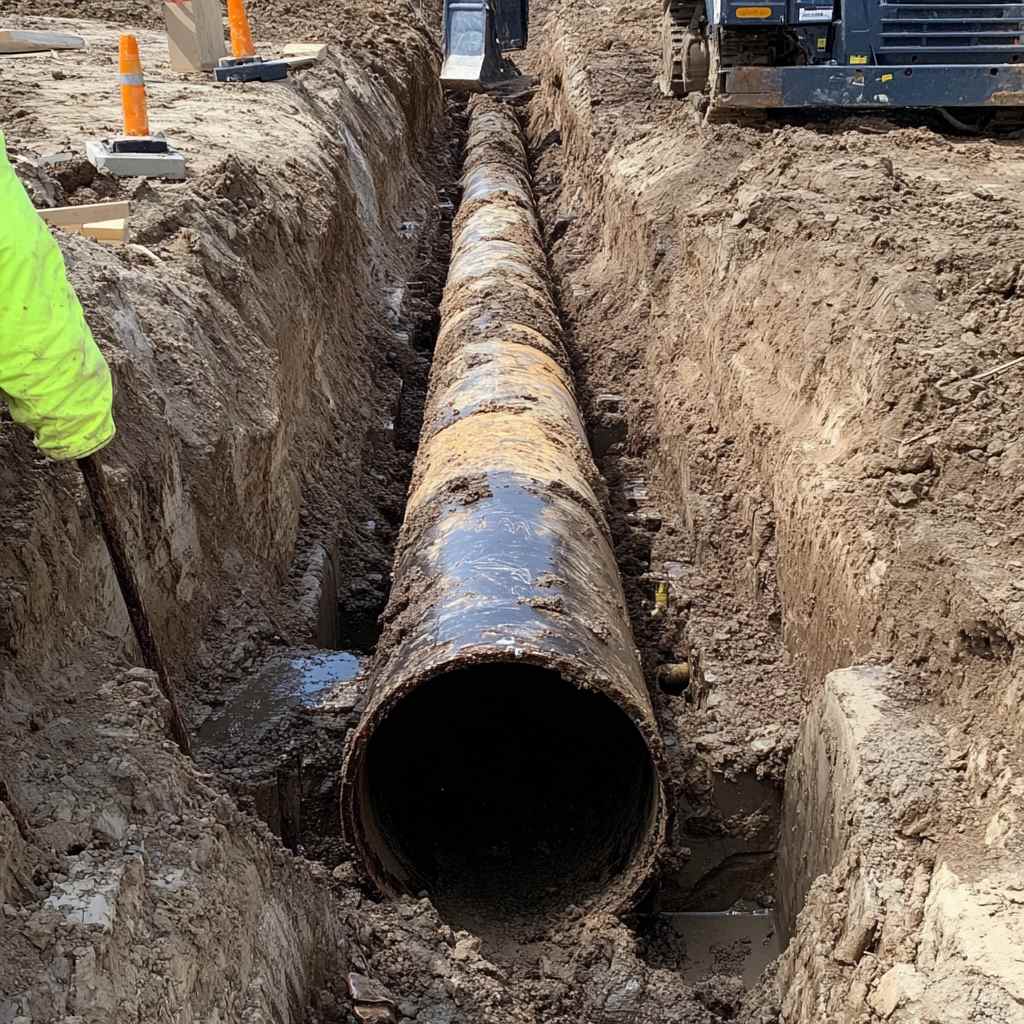Digging a sloped trench can seem tricky, but with the right approach and tools, it becomes much more manageable. Companies like In-Depth Excavation know that getting the slope right is key to preventing water problems and protecting structures.
Whether you’re working to solve drainage issues around your home, installing a French drain, or setting up an egress window well, knowing the right techniques will save you time and effort. Let’s walk through why sloped trenches matter, how to dig them efficiently, and the best practices to keep in mind.
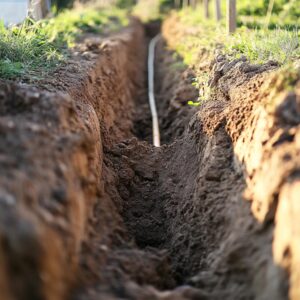
Reasons for Digging a Sloped Trench and Digging Methods
Sloped trenches are essential for projects where water needs to drain away from a structure. Common reasons include preventing basement flooding, improving yard drainage, or preparing for the installation of a drainage system like a French drain. For example, if you’re digging to direct water away from a home, a typical guideline is to create a slope that drops about 1 inch per foot for at least 5 feet out from the foundation.
When it comes to digging methods, you have two main options: manual digging and mechanical excavation. Manual digging with shovels and pickaxes works well for smaller projects or tight spaces, offering precision and control. Mechanical excavation, using trenchers or mini-excavators, speeds up the process for larger jobs or when time is a factor. Your choice depends on the size of the trench, soil type, and what tools you have on hand.
Digging a Sloped Trench Tips and Best Practices
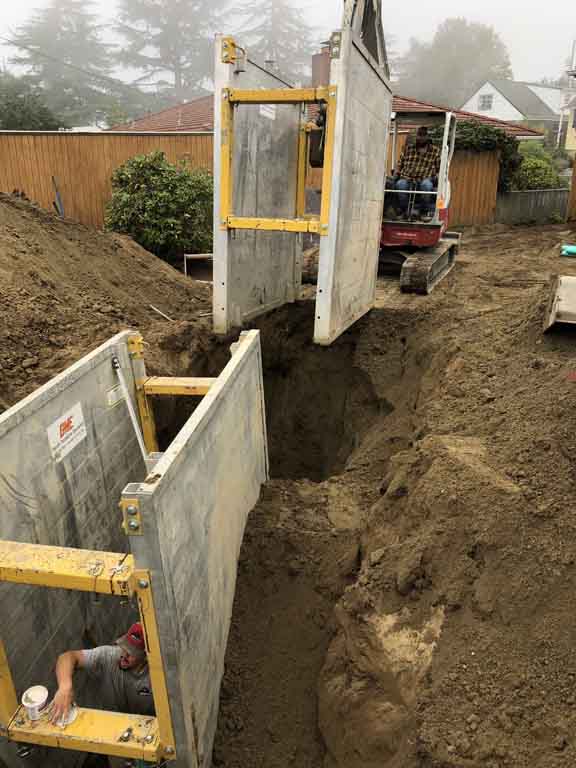
When it comes to digging a sloped trench, there are some essential tips and best practices that can make the process more efficient and safe. Whether you’re addressing water flooding or installing a drain, here are a few things to keep in mind:
Hand Tools That Can Be Used for Digging
Having the right tools is crucial for a successful digging project. Make sure you have spade shovels or trench shovels, which are ideal for scooping soil, as well as pickaxes and loppers for removing any unexpected obstacles like tree roots. These tools will help you navigate the soil and make your digging experience much smoother.
Prepare for Unforeseen Obstacles
When digging a sloped trench, it’s important to prepare for any unexpected challenges that may arise. Before you start, take the time to assess the area and identify any potential obstacles, such as rocks or existing underground utilities. By being prepared, you can come up with a plan and make necessary adjustments to ensure a successful excavation.
Leveraging Body Weight and Distributing Workload
Proper body mechanics are key to avoiding unnecessary strain and injury. When digging, remember to use your body weight to your advantage. Use your foot to push down the shovel into the ground, allowing your leg muscles to take on the workload. Additionally, it’s important to distribute the workload evenly and take breaks as needed. This will help you maintain energy and productivity throughout the digging process.
Calling Local Digging Hotline and Following Practical Strategies
Before starting any digging project, it’s important to call your local digging hotline. This step is essential to ensure the safety of your excavation and prevent damage to underground utilities. By following their guidelines, you can dig with confidence and peace of mind. Additionally, make sure to follow practical strategies and tips, such as picking suitable hand tools, preparing for unforeseen obstacles, and maintaining proper form during digging. These practices will help you complete your sloped trench efficiently and safely.
Frequently Asked Questions
Some common reasons for digging a sloped trench include addressing water flooding in the basement, installing an egress window well, or creating a French drain for proper water drainage.
Proper dimensions play a crucial role in ensuring the effectiveness of the trench. For example, when addressing water flooding in the basement, the slope should drop 1 inch for every 1 foot away from the home, for at least the first 5 feet.
There are two common methods for digging a sloped trench: manual digging and mechanical excavation. Manual digging offers more precision and is suitable for smaller projects, while mechanical excavation using heavy machinery provides faster progress.
Suitable hand tools for digging a sloped trench include spade shovels, trench shovels, pickaxes, and loppers for removing obstacles like tree roots.
You can leverage body weight by using your foot to push down the shovel into the ground. This helps to avoid unnecessary strain on the upper body.
It’s important to distribute the workload into manageable durations, take breaks, and stay hydrated for safe and efficient digging. Additionally, before starting any excavation, it’s crucial to call your local digging hotline to ensure safe digging and avoid any damage to underground utilities.
Yes, some practical strategies include picking suitable hand tools, preparing for unforeseen obstacles, and maintaining proper form during digging.

